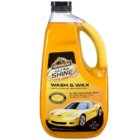Going thru the big D myself right now.^^^Totally Agee on this very important life lesson!
My first wife was the BOMB!
Red hair and a full sweater
Definitely not how I seen my life going.
Going thru the big D myself right now.^^^Totally Agee on this very important life lesson!
My first wife was the BOMB!
Red hair and a full sweater
You too!^^^Totally Agee on this very important life lesson!
My first wife was the BOMB!
Red hair and a full sweater
Best advice I can give to a beginner is stay away from redheads...
Super sexy but most seem to have bad wiring.
I've been saving multi caliber pistol and rifle brass for awhile. I'd like to start buying reloading equipment and take the plunge. I don't really want to start small with a beginner setup and was thinking about purchasing a Hornady Lock-N-Load AP. I also thought I'd start by reloading 9 mm ammo and then expand. But now I realize I have some questions about reloading procedures and how to best use a progressive press.... This is a little confusing. Any advice or clarification would be greatly appreciated.

That really depends on where you live, and how its stored. In southern California brass seemed to stay shinny forever. Here in TN the high heat and humidity seems to not help at all, even though i try and keep my safe dry with several dehumidifiers. Like they said earlier the very clean cases for me is to be able to do a very good inspection and see any flaws/cracks. I use any dish soap and some lemishine.So this could be a borderline stupid question, but I'm taking the plunge anyway!
I've read how many people that wet tumble their brass use a little dawn dishwashing soap and some Lemi Shine or citric acid and get nice shiny brass. Does that brass stay shiny in storage, or does it tarnish by oxidation with time? Does anyone add some wax or polish to their wet tumble to prevent that? Or would any type of brass coating on the inside mess with the future powder explosion?
If you are going to load nice hand loads, there is no way a progressive press will fit into a hand loaders tool box with the expectation that it will pay for itself.
I think I'd like to deprime and then tumble brass before resizing. Do you need a die and press to deprime or do they make a hand held device that would work on both pistol and rifle cartridges?
I've been saving multi caliber pistol and rifle brass for awhile. I'd like to start buying reloading equipment and take the plunge. I don't really want to start small with a beginner setup and was thinking about purchasing a Hornady Lock-N-Load AP.
1. I like the idea of wet tumbling with the primer pockets removed so everything looks shiny. Do people run their dirty brass through the automatic case feeder just to remove the primer before tumbling? Doesn't this step also resize the brass? Resizing dirty brass seems wrong to me.
2. Isn't case length trimming, chamfering and deburring done after a clean case is resized? Wouldn't this step be skipped using a progressive press?
3. Is case length trimming, chamfering and deburring only practically done on rifle cartridges? Is a single stage press preferred for rifle reloading?
4. How does one best use a progressive press to include all the important aspects of reloading? In other words, what is your sequence of reloading steps, including brass preparation, so that you can reload efficiently? It seems to me that a progressive press would be best used with all new brass. Can you add the brass preparation step and still use a progressive press well?
After all the great advice that's been given, I've decided to start with a single stage press. I was all set to buy the Dillon XL 650, but many reloaders have encouraged learning on a single stage first. So that's what I'll do! Of course, now I want the Forester Co-Ax which is out of stock everywhere.
I'm ready to at least start by depriming and then wet tumbling my brass.
1. Do people recycle primers, or do they just end up in the trash?
2. I've read tumbling with liquid detergent and Lemishine or citric acid. Armor All Wash & Wax has been recommended. I'm confused about the amounts to use however, since it's normally described as a "dash", "a pinch", "a tablespoon", etc., etc. Does anyone actually use more precise measurements for their cleaning solution?
3. How should I handle measuring powder for a single stage press? Should I buy an automated dispenser like is seen on the progressive press setups? Or do I just weigh every single charge with a scale and dump it in manually? That seems pretty slow.
Thanks!

